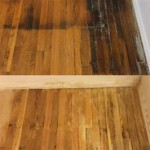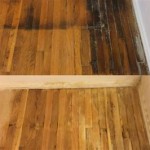Making Wooden Flooring: A Comprehensive Guide
Wooden flooring has been a desirable choice for homeowners for centuries, offering warmth, beauty, and durability. The process of creating wooden flooring involves several key steps, from selecting the right wood to applying the final finish. This article will explore the intricacies of manufacturing wooden flooring, covering the sourcing of materials, milling processes, drying techniques, and finishing applications.
Wood Selection and Sourcing
The foundation of quality wooden flooring lies in the selection of appropriate wood species. Hardwoods, such as oak, maple, and walnut, are commonly used due to their density and resistance to wear and tear. Softwoods, like pine and fir, may also be used, but they are generally more suitable for applications where a rustic appearance is desired, or in areas with less foot traffic. The choice of wood species significantly impacts the flooring's appearance, hardness, and cost.
Sustainable sourcing is a critical consideration in the modern wood flooring industry. Responsible forestry practices, such as selective logging and reforestation, ensure the long-term availability of timber resources and minimize environmental impact. Certifications like the Forest Stewardship Council (FSC) provide assurance that wood products originate from sustainably managed forests. Consumers are increasingly demanding that their flooring choices align with ethical and environmental principles, influencing manufacturers to adopt responsible sourcing policies.
The specific cut of the wood also plays a role in the final appearance and stability of the flooring. Plain-sawn wood, the most common and cost-effective cut, produces a cathedral grain pattern. Quarter-sawn wood, cut perpendicular to the growth rings, offers greater stability and a straighter grain pattern. Rift-sawn wood, cut at a 45-degree angle to the growth rings, provides the most consistent grain pattern and is often the most expensive option. Understanding the different cuts allows manufacturers to produce flooring with varying aesthetic qualities and structural properties.
Milling and Shaping the Wood
Once the wood has been selected and sourced, it undergoes milling processes to transform it into usable flooring planks. The initial step typically involves sawing the logs into boards of appropriate thickness. This is often done using large band saws or circular saws. The precise dimensions of the boards are critical for ensuring a uniform and level flooring surface.
After the boards are sawn, they are planed to create a smooth and consistent surface. Planing also ensures that the boards are of uniform thickness. The planing process may involve multiple passes to achieve the desired level of smoothness and accuracy. This step is essential for ensuring that the flooring planks fit together seamlessly.
The next stage in the milling process is shaping the edges of the boards to create either tongue-and-groove or click-lock profiles. Tongue-and-groove flooring has a protruding "tongue" on one edge and a corresponding "groove" on the opposite edge, allowing the planks to interlock. Click-lock flooring utilizes a more complex mechanical locking system that allows the planks to be installed without the need for adhesives or nails. The precision of these interlocking profiles is crucial for ensuring a secure and stable flooring installation.
Drying and Stabilizing the Wood
Wood is a hygroscopic material, meaning it absorbs and releases moisture from the surrounding environment. The moisture content of wood significantly affects its stability and dimensional stability. Green wood, freshly cut from the tree, has a high moisture content and is prone to warping, cracking, and shrinking as it dries. Therefore, drying the wood is a critical step in the manufacturing process.
Kiln drying is the most common method for drying wood for flooring. This process involves placing the milled boards in a controlled environment with regulated temperature and humidity. The wood is gradually dried to a specific moisture content, typically between 6% and 8% for flooring applications. Kiln drying allows for a faster and more controlled drying process compared to air drying, minimizing the risk of defects.
Air drying is an alternative method that involves stacking the wood in a well-ventilated area and allowing it to dry naturally over time. Air drying is a slower process than kiln drying, but it can be less energy-intensive and may result in a more stable product. In some cases, manufacturers may use a combination of air drying and kiln drying to achieve optimal results.
After drying, the wood is often acclimated to the environment where it will be installed. This involves storing the flooring planks in the installation area for several days to allow them to adjust to the local temperature and humidity. Acclimation helps to minimize movement and expansion after installation, reducing the risk of gaps or buckling.
Grading and Sorting
Once the wood has been properly dried and acclimated, it undergoes a grading and sorting process. This involves visually inspecting each plank for defects, such as knots, splits, and discoloration. The planks are then sorted into different grades based on their appearance and quality. Common grading standards include select grade, which has minimal knots and a uniform appearance, and common grade, which has more knots and variations in color and grain.
The grading process allows manufacturers to offer flooring products with varying aesthetic characteristics and price points. Homeowners can choose the grade that best suits their style preferences and budget. Lower grades may be more suitable for rustic or informal settings, while higher grades are often preferred for more formal or contemporary designs.
Some manufacturers may also offer custom grading options, allowing customers to specify the desired characteristics of their flooring, such as the size and frequency of knots, the amount of color variation, and the presence of certain grain patterns. This level of customization allows for a truly unique and personalized flooring solution.
Finishing Applications
The final step in the manufacturing process is applying a finish to the flooring planks. The finish protects the wood from moisture, scratches, and wear, while also enhancing its appearance. There are several different types of finishes commonly used for wooden flooring, each with its own advantages and disadvantages.
Polyurethane finishes are durable and water-resistant, making them a popular choice for high-traffic areas. Polyurethane creates a protective coating on the surface of the wood, shielding it from scratches and stains. It is available in various sheens, from matte to high-gloss.
Oil-based finishes penetrate the wood and enhance its natural grain and color. Oil-based finishes are typically less durable than polyurethane finishes, but they can be easier to repair. They also tend to require more frequent maintenance, such as re-oiling.
Water-based finishes are environmentally friendly and low in volatile organic compounds (VOCs). Water-based finishes are becoming increasingly popular due to their low odor and reduced environmental impact. They are also available in a range of sheens and are generally comparable in durability to polyurethane finishes.
The finishing process typically involves multiple coats, with sanding between each coat to create a smooth and even surface. The specific number of coats and the sanding techniques used will vary depending on the type of finish and the desired level of protection and appearance.
In addition to applying a protective finish, some manufacturers may also apply stains or dyes to alter the color of the wood. Staining can be used to create a wide range of effects, from light and airy to dark and dramatic. The choice of stain will depend on the desired aesthetic and the natural color of the wood.
Properly applied, a high-quality finish will enhance the beauty and extend the lifespan of wooden flooring, providing years of enjoyment and value.

Make Your Own Plank Flooring Using 1 X 12 Lumber Hallstrom Home

Make Your Own Plank Flooring Using 1 X 12 Lumber Hallstrom Home

How To Install Hardwood Flooring Step By Forbes Home

Inexpensive Wood Floor That Looks Like A Million Dollars

Inexpensive Wood Floor That Looks Like A Million Dollars

How To Make A Wooden Floor Mat Free Plans

How Hardwood Floors Are Made Garrison Collection

How To Make 2x4 End Grain Floors

Inexpensive Wood Floor That Looks Like A Million Dollars

Make Your Own Plank Flooring Using 1 X 12 Lumber Hallstrom Home
Related Posts








